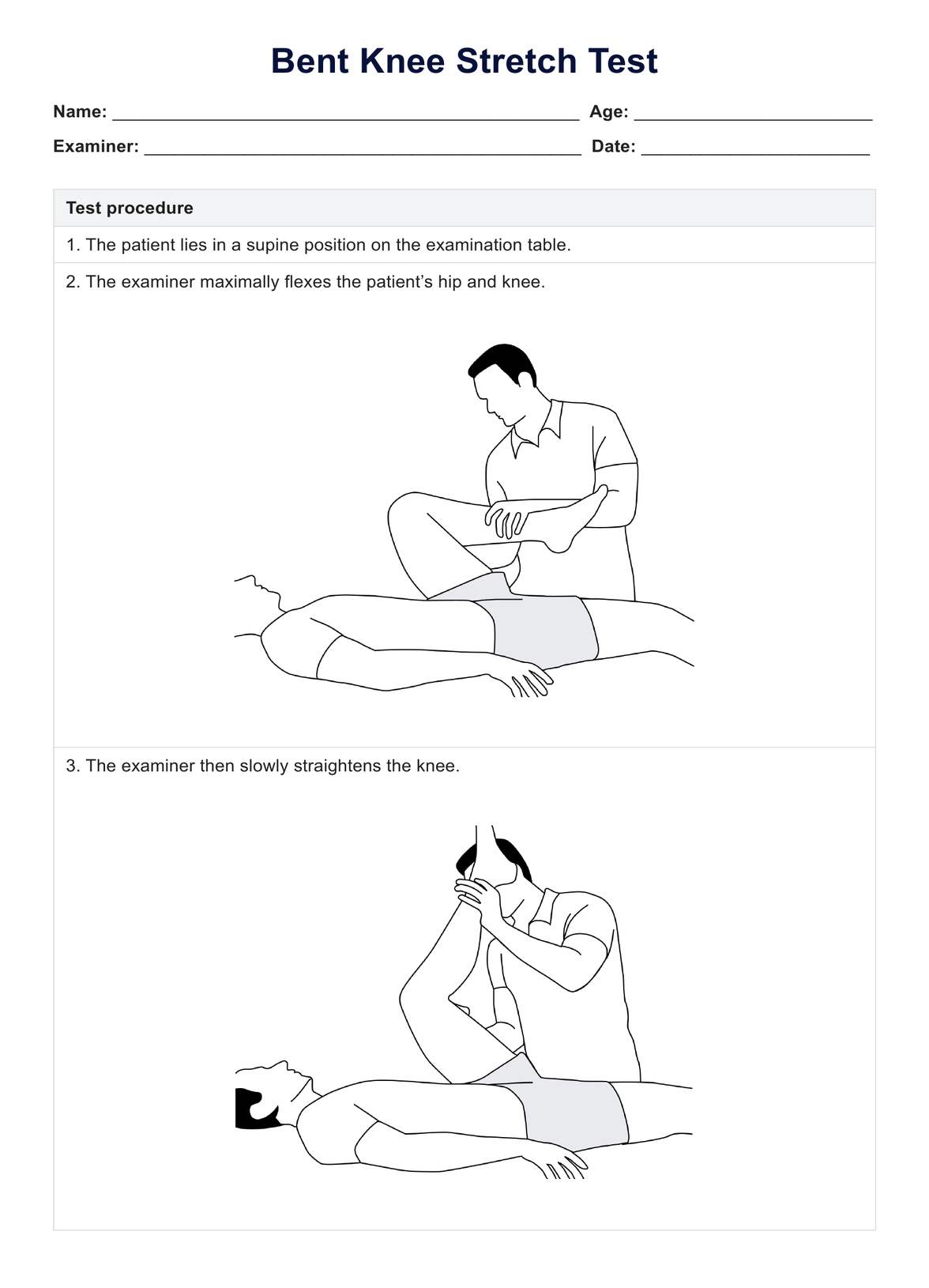Yes, stretching hamstrings with a bent knee targets the muscles closer to the knee, allowing for a more focused stretch on the lower part of the hamstrings.

Bent Knee Stretch Test
Discover the Bent Knee Stretch Test with our detailed guide and template. Learn how to assess and manage proximal hamstring tendinopathy effectively.
Use Template
Bent Knee Stretch Test Template
Commonly asked questions
The Bent Knee Stretch Test is used to assess the flexibility of the hamstrings and identify any discomfort or exacerbation of symptoms, indicating conditions like proximal hamstring tendinopathy.
Treating proximal hamstring tendinopathy typically involves rest, physical therapy focusing on stretching and strengthening exercises, pain management with NSAIDs, and, in severe cases, possibly corticosteroid injections or surgery.
EHR and practice management software
Get started for free
*No credit card required
Free
$0/usd
Unlimited clients
Telehealth
1GB of storage
Client portal text
Automated billing and online payments











